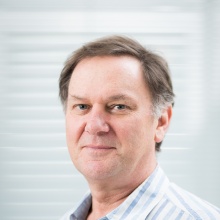Contact
Dr. Davis is a research scientist with over 40 years experience in pure and applied research. He obtained his Ph. D. in Experimental Gravitation physics from the University of Melbourne in 1987. He was employed by the Commonwealth Scientific and Industrial Research Organisation (CSIRO) in Australia for 29 years before leaving in 2015. During that time he worked across many fields of science including atmospheric research, materials science, x-ray science, computer vision, micro and nano technology and optics. He has a strong background in both experimental and theoretical physics, including mathematical principles, experiment design and applications. His skills include mathematical and numerical modelling, software development and computer simulation, electronics design and manufacture, the design and execution of physics-based experiments, data analysis and interpretation.
While at CSIRO, Dr. Davis has worked on many applied projects, such as machine vision systems for aircraft tracking, people tracking and for steel plate manufacture, x-ray detector systems for a CSIRO spin-out company and for in-house research, biosensor development for the detection of biowarfare agents and viruses, the growth of semiconductor materials for infrared imaging sensors, instruments for remote sensing and the design of high performance computing devices.
Dr. Davis has made major contributions to the field of plasmonics, including the development of nanoscale optical circuits based on localised surface plasmons, theoretical models of plasmon interactions for designing plasmonic devices and the invention and demonstration of plasmonic difference circuits and modulators.
Dr. Davis has held key roles in the Australian Institute of Physics (AIP), including secretary and chairman of the Victorian Branch of the AIP and for many years was convenor of the AIP Science Policy Committee. He redrafted the new policy document in 2001 that forms the basis of AIP Science Policy today. He has served on organising committees of international science conferences as well as chairing conference sessions. He has managed science projects involving a broad cross-section of scientific disciplines, such as chemistry, biology, surface science and electronics engineering.
He currently holds a position as Honorary Professor of Physics at the University of Melbourne where he collaborates on the development of meta surface devices for optical imaging applications. He regularly visits the University of Stuttgart and the University of Duisburg-Essen where he works with collaborators on fundamental experiments with surface plasmon polaritons. He has an excellent track record in research with papers published in Nature, Science, Physical Review Letters and Nano Letters. His lifetime citations of published works exceeds 5600 with an H-index of 33 and an i10 index of 76.


